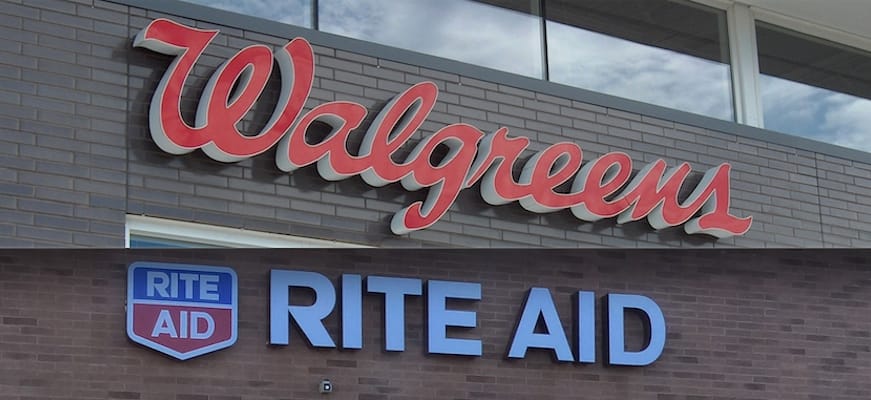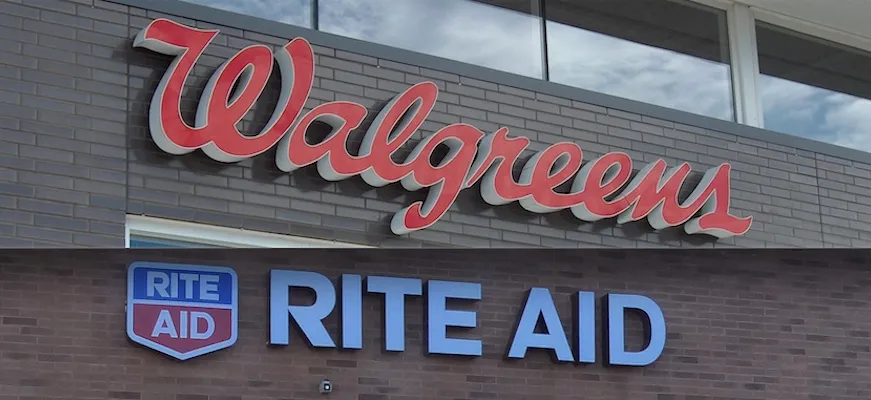
CAMP HILL, Pa. — Rite Aid Corp. stockholders have voted overwhelmingly to approve the company’s $17.2 billion deal to be acquired by Walgreens Boots Alliance Inc.
Approximately 97% of the votes cast at a special meeting of stockholders on Thursday were in favor of the deal. A quorum of 72% of Rite Aid’s total outstanding shares of common stock as of Dec. 18 voted.
In a separate item, 89% of votes approved compensation that will or may become payable to Rite Aid executive officers in connection with the merger. The vote was nonbinding.
WBA is paying Rite Aid shareholders $9 per share, for a total of more than $9 billion in cash and representing a premium of 48% to Rite Aid’s closing share price on Oct. 26, the day before the deal was announced. The acquisition agreement includes the assumption of over $7 billion in net debt.
The transaction, expected to be completed in the second half of this year, is still subject to the satisfaction of antitrust regulations.
In December, WBA said it completed $12.8 billion in term loan facilities as part of the financing for the deal to buy Rite Aid. The Federal Trade Commission, under the Hart-Scott-Rodino Antitrust Improvements Act, announced in December that it has requested additional information from WBA and Rite Aid regarding the proposed acquisition.

The combination of Walgreens and Rite Aid stands to create the largest U.S. pharmacy retailer, with more than 12,800 stores across the country. Rite Aid, which had fiscal 2015 sales of $26.5 billion, operates about 4,560 stores in 31 states and the District of Columbia. Currently, CVS Health is the nation’s largest chain drug retailer, with more than 9,500 retail pharmacies. CVS had leapfrogged Walgreens into the No. 1 spot after recently closing its $1.9 billion purchase of Target Corp.’s pharmacy and clinic business.
Now the focus shifts to the number of stores that WBA will divest to gain regulatory approval for the Rite Aid acquisition. Estimates have varied widely among industry observers.
In a filing last fall with the Securities and Exchange Commission, WBA said the deal allows for up to 1,000 outlets to be closed or sold “if required by regulators.” But the company also said the number will probably be less than 500. Some analysts agreed, putting likely divestments at 400.
Walgreens, which already has stores in all 50 states, has said that the addition of Rite Aid will fill gaps in the Northeast and Southern California. The Mid-Atlantic, too, stands as another area where Rite Aid will bring a significant benefit in coverage for Walgreens.
“The merger will solidify WBA’s dominant position in the U.S. retail prescription market, with a combined sales base of $115 billion on approximately 13,000 stores and the No. 1 retail prescription share at 25% to 26%, prior to any potential FTC-mandated closings or divestitures,” Fitch Ratings analyst Monica Aggarwal observed in a report after the acquisition was announced.
“There are about 13 states, primarily California and the East Coast, where WBA and Rite Aid have sizable overlap that could raise antitrust concerns,” Aggarwal stated. “The FTC has historically looked at competition within a two-mile operating radius in the drug store space to determine store closings. Barring a significant number of store divestitures, Fitch expects that even with FTC-mandated store closings in certain markets, WBA could capture or transfer some of the prescription volume of any closed stores (unless they are acquired by other retailers), mitigating some of the impact.”
At WBA’s annual shareholders meeting last week, executive vice chairman and chief executive officer Stefano Pessina said the Rite Aid acquisition “will go a long way to help fill the gaps in our geographical coverage in the U.S. in one step.” He added that “this deal can be harmonized with the Walgreens business” and promises other benefits to WBA.
“As we said in our announcement, the addition of Rite Aid to our network offers the potential for significant cost savings and purchasing efficiencies, in addition to opportunities in terms of improved market penetration for our own exclusive product portfolio,” Pessina told WBA shareholders at the Jan. 27 meeting. “We are currently going through the regulatory process to get approval for this transaction. So far, this process is proceeding as we had anticipated, and we continue to expect the transaction to complete at some point in the second half of this calendar year.”
Russell Redman contributed to this story.









